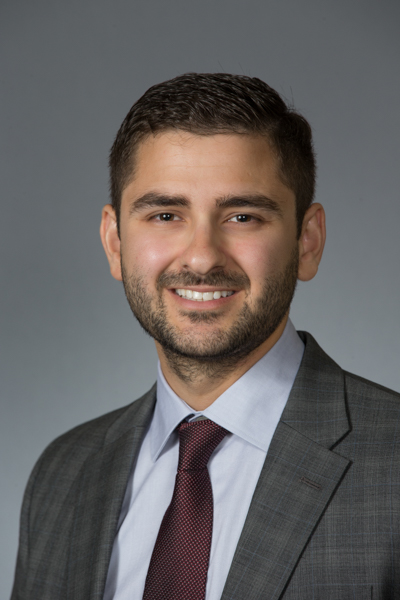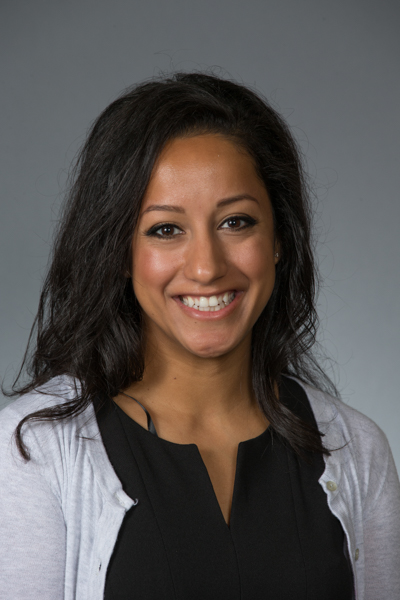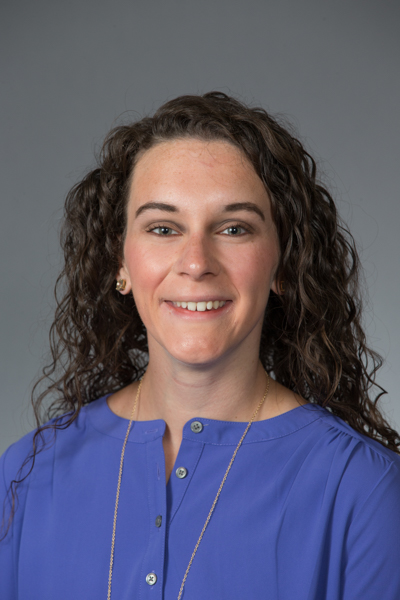Medical Scholar Researcher Alumni
Medical Scholar Researcher, Class 2022

Campus: Baylor Scott and White Health, Temple, TX
Research Area: Proximal Pulmonary Embolization to Control Recurrent Severe Hemoptysis
Mentor: Steven Ruiz, MD and Gloria M. Conover, PhD
Eric Swanson, a third-year Medical Student in the Texas A&M University College of Medicine, is investigating a novel proximal pulmonary artery embolization procedure to control recurrent hemoptysis under the mentorship of Dr. Steven Ruiz MD, Interventional Radiologist, Baylor Scott and White Temple Department of Interventional Radiology, and Dr. Gloria Conover PhD, Director of Medical Student Research and Instructional Assistant Professor, Department of Medical Education, Texas A&M University College of Medicine. Recurrent hemoptysis is a common complication in lung tumor patients occurring in approximately 20% of lung tumor patients with 3% incidence of causing death when hemoptysis is severe. Greater than 90% of hemoptysis originates from the systemic arteries with less than 10% originating from the pulmonary arteries. The underlying pathology contributing to hemoptysis in lung tumor patients is pulmonary artery erosion secondary to tumor necrosis. Diagnosis is confirmed with computed tomography (CT) scan. Currently, bronchial artery embolization (BAE) is the first-line treatment with surgical management often used as the definitive treatment in surgical candidates. However, in 20% of patients, bleeding will persist post-BAE and is associated with high mortality. In such cases, pulmonary artery embolization is indicated to control persistent hemoptysis post-BAE or in patients with CT diagnosis of pulmonary artery pathology, such as erosion or pseudoaneurysm. Typically, only the segmental or distal branch of the pulmonary artery contributing to the bleeding is embolized in an attempt to minimize the impact of embolization upon pulmonary hemodynamics and maintain perfusion to as much of the lung parenchyma as possible. As such, there has never been a reported case of a proximal pulmonary artery embolization to treat hemoptysis. Here, a novel case of a complete proximal pulmonary artery embolization in a lung tumor patient was investigated which effectively resolved recurrent hemoptysis after failed bronchial artery embolization.

Campus: CHI St. Joseph Health Regional Hospital, Bryan, TX
Research Area: The Use and Effects of Humor in the Clinical Learning Environment
Mentor: Angela Hairrell, Ph.D.
Jordan Garcia, class of 2022 in the College of Medicine, is investigating the role and functions of humor in the clinical learning environment under the guidance of Angela Hairrell, PhD, Director of Academic Support Services at Texas A&M College of Medicine. Much of what medical students and residents learn in clinical training settings is transmitted through social interactions. Although humor is a pervasive, multifaceted component of these interactions, there has been surprisingly little medical education research on how medical trainees and educators understand and interpret humor. It is essential to investigate humor’s psychological, social, and cognitive functions to understand the nuances of the everyday use of humor in clinical settings. The goal of our research is to first examine the literature on the perspectives of medical educators and trainees regarding humor. Specifically, we are interested in the different humor styles frequently employed in clinical settings. Then, we aim to increase awareness of humor’s effects and offer suggestions for medical educators to implement into their clinical teaching practice. We are examining humor as an interpersonal and communication skill and are using a communication competence framework in our current research. Our hypothesis is that when used effectively and appropriately, humor can be a useful component of a medical educator’s toolset that facilitates learning.
Medical Scholar Researchers Team: Classes 2021 and 2022

Michael Junior

Astha Mittal
Campus: CHI St. Joseph Health Regional Hospital, Bryan, TX
Research Area: Assessing Learner’s Resilience in a Longitudinal Clerkship Curriculum
Mentor: Michael Spohn, MD, FAEM
Sara Yasrebi, M2 student in the College of Mecicine, participated in a research project in Lifestyle Medicine to query a physician’s role to improve patient health by referring to community-based nutrition education, under the guidance of Mark D. Faries, PhD, Associate Professor at the Texas A&M AgriLife Extension Service, and Adjunct Faculty within the Health Science Center. Dietary risks are the leading risk factor for premature death in the United States, with greater disparities in low-income and rural families without adequate access to quality healthcare and quality, nutritional education. Lifestyle Medicine is the evidence-based, lifestyle therapeutic approach to prevent, treat and reverse lifestyle-related disease. While physicians might feel that nutritional counseling is within the realm of their care, many have barriers to implement nutrition-based education in practice, and depend on community-based, nutrition education programs designed for at-risk populations. The objectives of this study were to (1) identify a physician's ability to locate community nutrition education programs, and (2) identify which programs could positively impact the health care outcome of their patients. Our findings showed that while certain key words yielded a higher proportion of relevant results, the proportion of pertinent nutrition programs found within the first 10 results were low. The phrases with the largest proportion of results within the first 2 pages (> 75%) were “community education nutrition programs low-income” and “diet nutrition education programs low-income Texas”. The addition of “low-income” to the search phrase produce a more data, while the addition of “rural” or “programs” were not helpful. These findings reinforce the idea that a strategically-phrased Google-search and proper evaluation of such results poses a short-term fix to the high-demand and low-supply of formally-educated nutrition advising by physicians.
Medical Scholar Researchers, Class of 2021
Campus: Houston Methodist Hospital, Texas Medical Center, Houston, TX
Research Area: Surgical Oncology
Mentor: Ashley Holder MD, FACS
Jessica Domitrovic, a M3 student in the College of Medicine, is investigating dosing of heated intraperitoneal chemotherapy after cytoreductive surgery for peritoneal carcinomatosis, with Dr. Ashley Holder MD, FACS, General Surgeon and Surgical Oncologist, Houston Methodist Hospital Department of Surgery, Division of Surgical Oncology, and Assistant Professor of Surgery, Houston Methodist Research Institute, Division of Nanomedicine. They are collaborating with engineers Milos Kojik PhD, Professor of Nanomedicine, Houston Methodist Research Institute, Division of Nanomedicine, and Miljan Milosovic PhD, Faculty of Information Technology, Belgrade Metropolitan University, Belgrade, Serbia.
Peritoneal surface malignancies, or cancers that spread to the lining of the abdomen, can be difficult to treat since systemic chemotherapy often has minimal effect and surgical resection alone may miss microscopic tumors. Recommended treatment is cytoreductive surgery followed by filling the abdomen with a heated chemotherapy bath (HIPEC) to kill remaining cancer cells. This method has shown significant survival benefit for patients with metastatic GI and ovarian cancers. However, little is known about how subtle changes in the total volume of the chemotherapy bath alters the concentration of chemotherapy delivered to tumors. Current methods of calculating volume of perfusate in HIPEC are based on body surface area.
Through mathematical modeling, a patient’s peritoneal cavity can be recreated from CT scans of the abdomen and pelvis, allowing for the peritoneal surface area and volume to be calculated precisely. With these measurements, HIPEC surgeons could more precisely determine chemotherapy concentrations and the total volume of perfusate.
Furthermore, this model could also predict how changes in the temperature of the chemotherapy infused results in temperature changes in the perfusate at the level of the peritoneum with potential downstream effects including changes in perfusion and permeability within peritoneal malignancies. This IRB-approved study is an exploratory design intended to generate the model and investigate its strengths and limitations.

Rutuja Desai

Timothy Fan

Angelica Hatfield

Brittany Mccune
Campus: CHI St. Joseph Health Regional Hospital, Bryan, TX
Research Area: Home visit program, Public Health
Mentor: Hector Chapa, MD, Jaime Hardy, FNP and Gerard Carrino, PhD, MPH
Ms Hatfield, McCune, Desai and Mr. Fan, a team of M3 students in the AIM program at Texas A&M College of Medicine are taking a longitudinal medical scholarly research elective MHUM823 to conduct an interprofessional home visit program under the guidance of a team of health professionals in the College of Medicine (Dr.Chapa), Nursing (Ms Hardy) and Pharmacy (Dr. Carrino). A study reported that up 30% of visits to the emergency department (ED) could have been treated by primary care doctors or other care settings. This study concluded that the 4.3 million avoidable visits resulted in $8.3 billion loss in medical resources (Premier,Inc. 2019. Improving the Care of Patients with Chronic Conditions). Inappropriate ED visits due to hypertension, diabetes, COPD/asthma, and heart failure result in unnecessary usage of medical resources, depriving those in more critical conditions of adequate care. CHI St. Joseph Hospital in Bryan, Texas and the Texas A&M HSC College of nursing initiated an Inter-Professional Education (IPE) Home Visit Program with the goal of reducing preventable ED visits related to the above mentioned chronic diseases, while simultaneously improving medical access to those identified patients. Students from the College of Nursing, College of Medicine, College of Pharmacy participate in the program through case reviews. Through the IPE Home Visits Program research, we hope to identify the most common chronic health conditions that are associated with repeat ED visits, the barriers to healthcare, potential reductions in healthcare expenditures, as well as the health outcomes of enrolled patients. We predict that IPE Home Visits Program research data findings will not only reduce unnecessary financial burden to the healthcare system, but more importantly improve the health and access to medical care of those patients who would otherwise ‘fall between the cracks’ of medical attention.
Medical Scholar Explorers, Class of 2021
Campus: Baylor University Medical Center, Dallas, TX
Research Area: Cardiology | Risk assessment for complications of left ventricular device
Mentor: Medhat Askar, MD, PhD | Detlef Wencker, MD
Dipesh Bhakta, M4 student at the College of Medicine, is conducting a clinical research study investigating the risk of cardiovascular complications under the mentorship Dr. Detlef Wenker, MD cardiologist at Baylor University Medical Center and Affiliate Faculty at the Texas A&M College of Medicine. Right ventricular failure (RVF) following left ventricular assist device (LVAD) implantation is a common complication and associated with increased mortality. Clinical predictors contributing to post-LVAD RVF remain largely unknown in patients who have received the recently FDA approved Heartmate III (HM3) LVAD. Our objective was to evaluate potential predictors of RVF. In our study, RVF was not prevented by optimizing traditional preoperative hemodynamic risk factors for RVF (CVP ≤ 12, CVP / wedge ratio ≤0.6, and PAPi >2) and occurred irrespective of echocardiographically guided preoperative RV function. The development of RVF after HM3 LVAD implant was highly associated with lower LVAD speed in this study. This project resulted in poster presentations at the American College of Cardiology.20 Together With World Congress of Cardiology (03/2020) and 2020 Anerucab Transplant Congress (05/2020) national conferences.
Campus: Baylor Scott and White, Temple, TX
Research Area: Rare autoimmune disorders
Mentor: James Hall, DO
Jonaphine Rae Mata, MS4 in the College of Medicine, participated in a case report study under the mentorship of James A. Hall, D.O. a Fellow in the Department of Hematology and Oncology at Baylor Scott & White in Temple, Texas. Under his guidance, Ms. Mata documented a patient case report with a rare condition, Autoimmune Lymphoproliferative Syndrome (ALPS), which she has presented at multiple medical conferences.
Autoimmune Lymphoproliferative Syndrome is a rare disorder characterized by dysregulated lymphocyte apoptosis leading to non-malignant lymphoproliferation. The pathophysiology of ALPS leads to lymphoproliferative stigmata, with an increased risk of development of concurrent autoimmune conditions. In this report, they present a remarkable patient case of ALPS with acquired hemophilia A that subsequently, developed lupus anticoagulant (LA) positivity. Of note, the development of acquired hemophilia A portends to an increased risk of life-threatening bleeding, whereas LA positivity leads to a strong thrombotic risk. Thus, the transition from the management of bleeding to thrombotic risk in a patient with the rare ALPS presents a special case.
This patient case demonstrates a clinical dilemma of achieving hemostatic equilibrium in patients with the rare ALPS and opposing hematologic conditions. The utilization of clinical reasoning based on principles of hematology allows for proper management of this rare condition. Recognition of the ability of ALPS to present with autoimmune conditions that portend to hemostatic instability will aid in the future screening, treatment and management of ALPS patients.